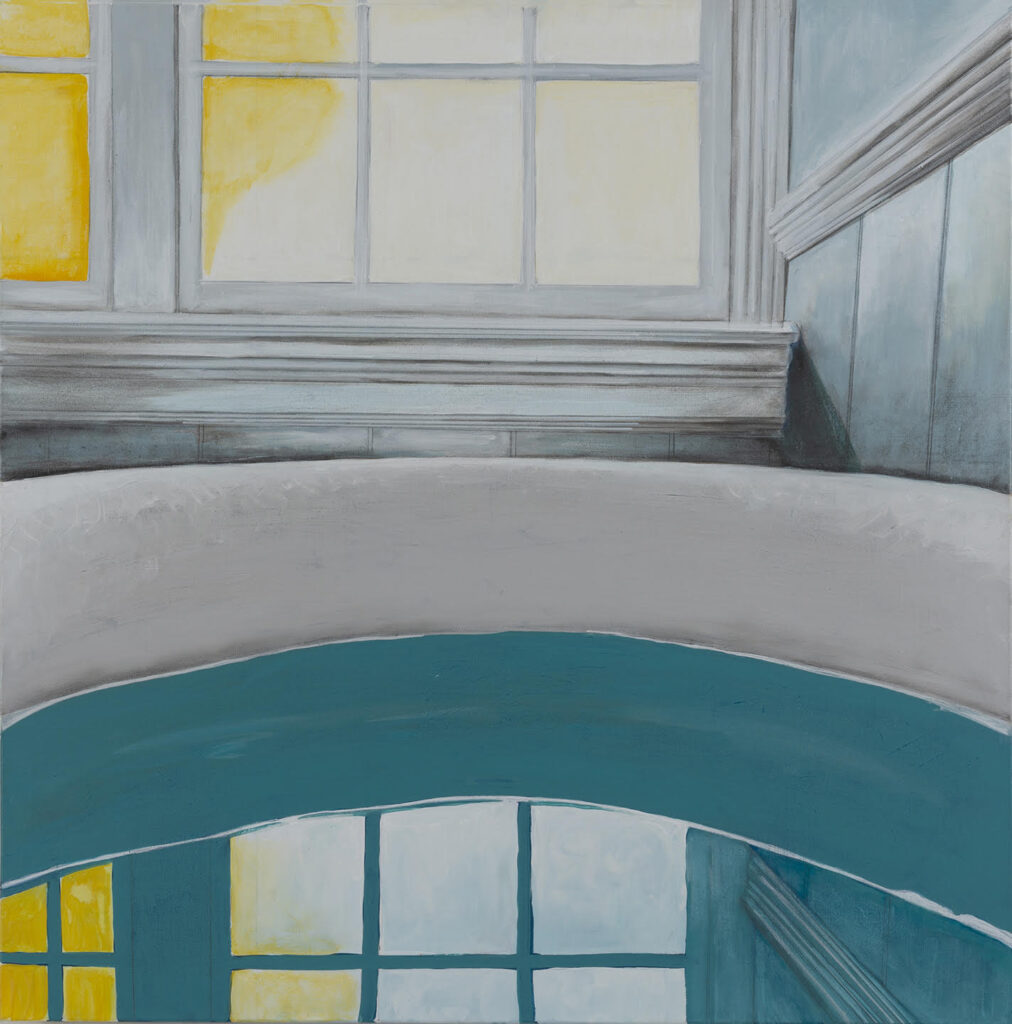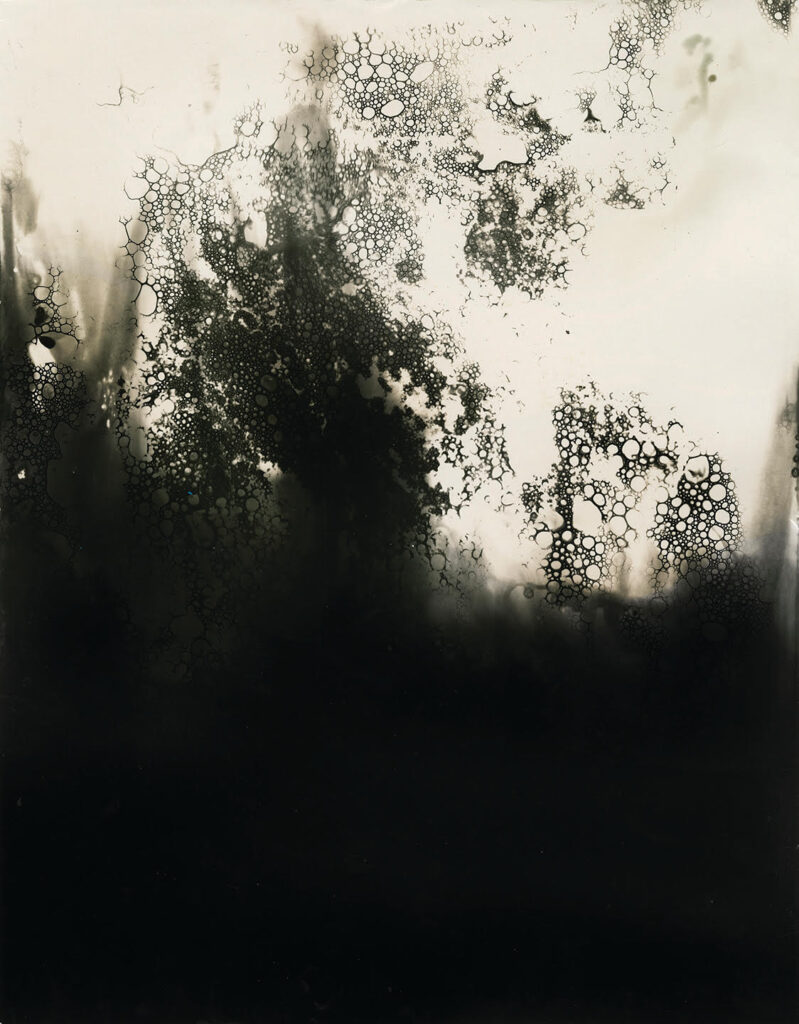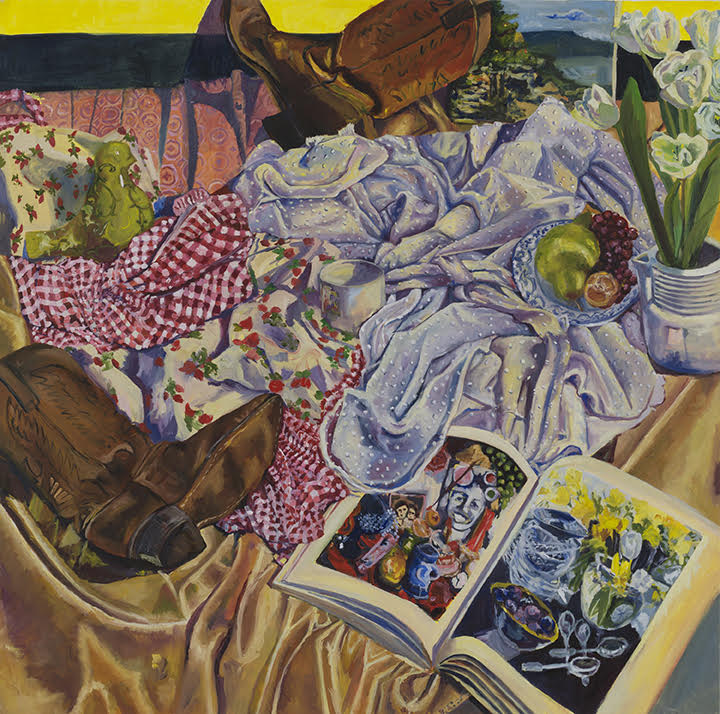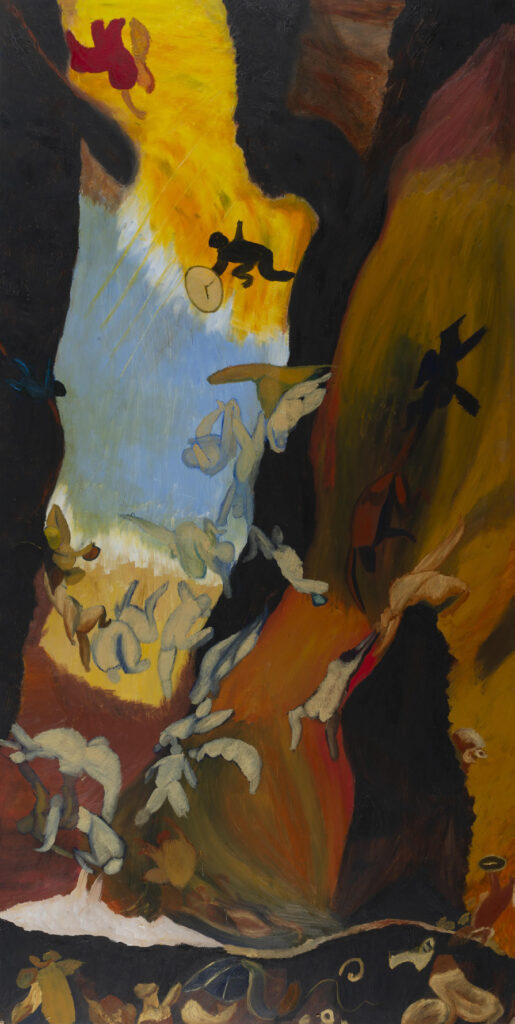The Western Connecticut State University 2023 MFA Thesis Exhibition includes four artists, each in their own medium, showing an aspect of their inner dialogue in the process of creating art. These introspective works are on view at Blue Mountain Gallery from June 20 through July 8.

Aimee Jette’s art appears deceptively simple. After looking again and again at her straightforward presentation of everyday objects, one sees more than what initially meets the eye.
Jette’s choice of what to paint involves geometry in an orderly and fresh composition. Her arrangement in the piece titled Window creates a sense of calm as she paints the beauty of an ordinary object. Her other two pieces of a communication device and a vintage Panasonic radio offer that same feeling. One is reminded of Motherwell’s paintings using rectangular shapes as his inspiration, although he uses paint very differently. Jette wants us to see beyond the objects, beyond their utility. Just as the poet William Blake writes of the daily observations of life that he called, “luminous particulars,” Jette asks that we notice what could be easily overlooked in abstraction. She compels us to look at the parts rather than the whole by zeroing in on the moment in an entrancement of light. In the painting the Window, Jette shows us two versions of a partial view of a bathtub, a window and daylight in which the image is broken up and transformed from the typical, into a serene composition. It engrosses the viewer since one is discerning the art as being ruptured from its original meaning and context. Jette’s art and point of view offers new possibilities of seeing and the element of surprise.

The work of Dan Baker reminds one of haiku poetry. As if he is writing a three line poem with a subtle use of visual language. The artwork titled, “The Never Ending Reach” from his series, “Bubbles,” is a darkroom chemigram. (A chemigram is an experimental piece of art where an image is made by painting with chemicals on light sensitive paper.) What is created from this process is randomness and a minimal and graceful image. At the base of the image it is solid black and then opens up to the light into cloud-like bubbles that resemble magical thunderheads. It is intangible and diaphanous, also somewhat foreboding. It proves that both beauty and fragility can exist together. Baker is a poet who allows for the joy of happenstance.

Lilah Heyman is a detail person. She paints the specifics with the passion of an abstractionist. She documents from direct observation with a love of pattern, color and light. In the piece titled Somewhere in Vermont, one sees a jumble of fabric, tablecloth, towels, fruit, a pair of boots, a book and a potted plant. It is an amassing of the radiant specifics of everyday objects. The manner in which the fabric folds are painted exhibits a love of softness, of secrets, and textiles that create light and shadow. Heyman mixes it up in another piece called In Bloom, by painting what looks like the shadow of a floral bouquet against a striped wall. Again, she demonstrates the sensuality of material and provides an intimacy and tenderness to the common object.

Marcus Escribano’s work is influenced by the Taino culture, which are the traditions and everyday life of the Caribbean. One is treated to rich, earthy colors and bold totemic canvases that tell a story with paint and abstraction. In his piece Fallen with oil on a wood panel, we see the shapes of human bodies falling into some deep crevice in what could be the earth. As the group of bodies gets closer to the base of the painting, their human shapes become blurred, and they begin to look like birds in flight. It is a palpable feeling of being off balance. Is it a descent into hell? Or a dizzying journey to another life, where one becomes liberated as a winged creature? No matter, since Escribano doesn’t leave us alone in this topsy-turvy world. In another related piece, Dancing With Ignorance, no one is falling, just two figures are dancing on the surface of the deep strata of earthen-colored stripes. Is Escribano telling us there is more to explore in his culture? Perhaps we need to be aware of the layers of our lives in the same way the poet Stanley Kuntiz said, “Live in the layers not the litter.” Escribano has more to share—the music, dance, storytelling, food and history of his culture. We look forward to seeing more of his art and vision. G&S





Leave a Comment